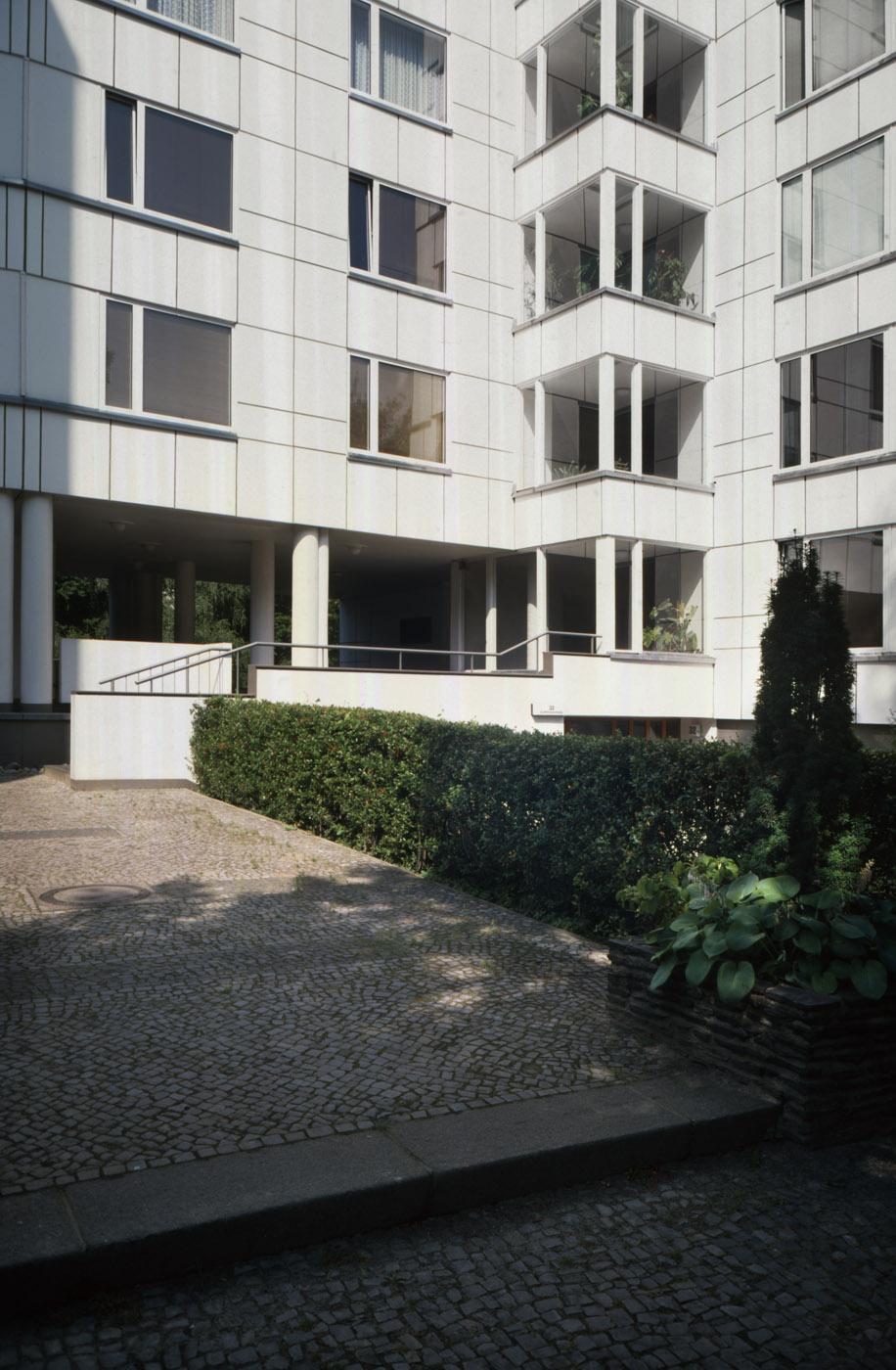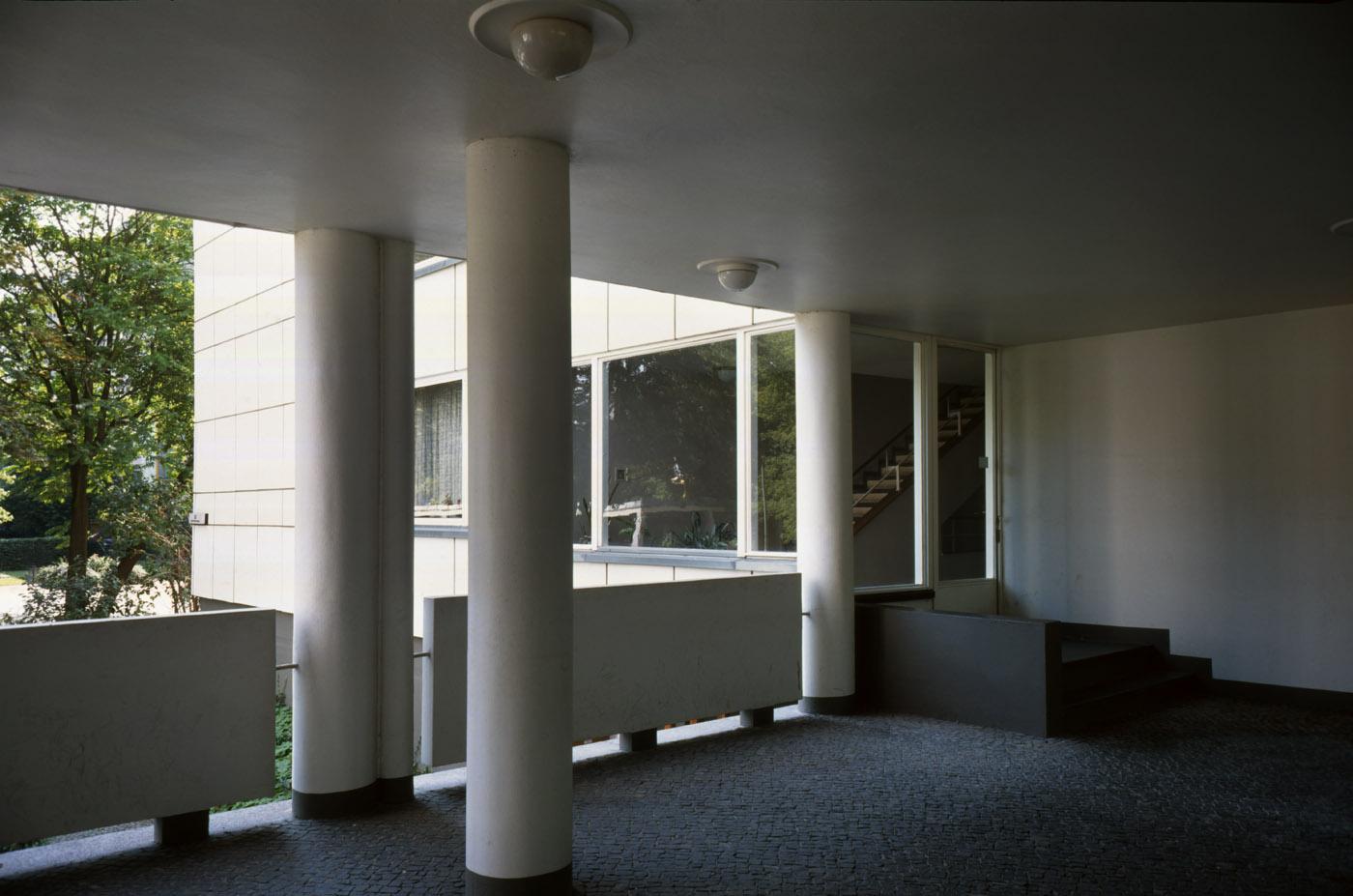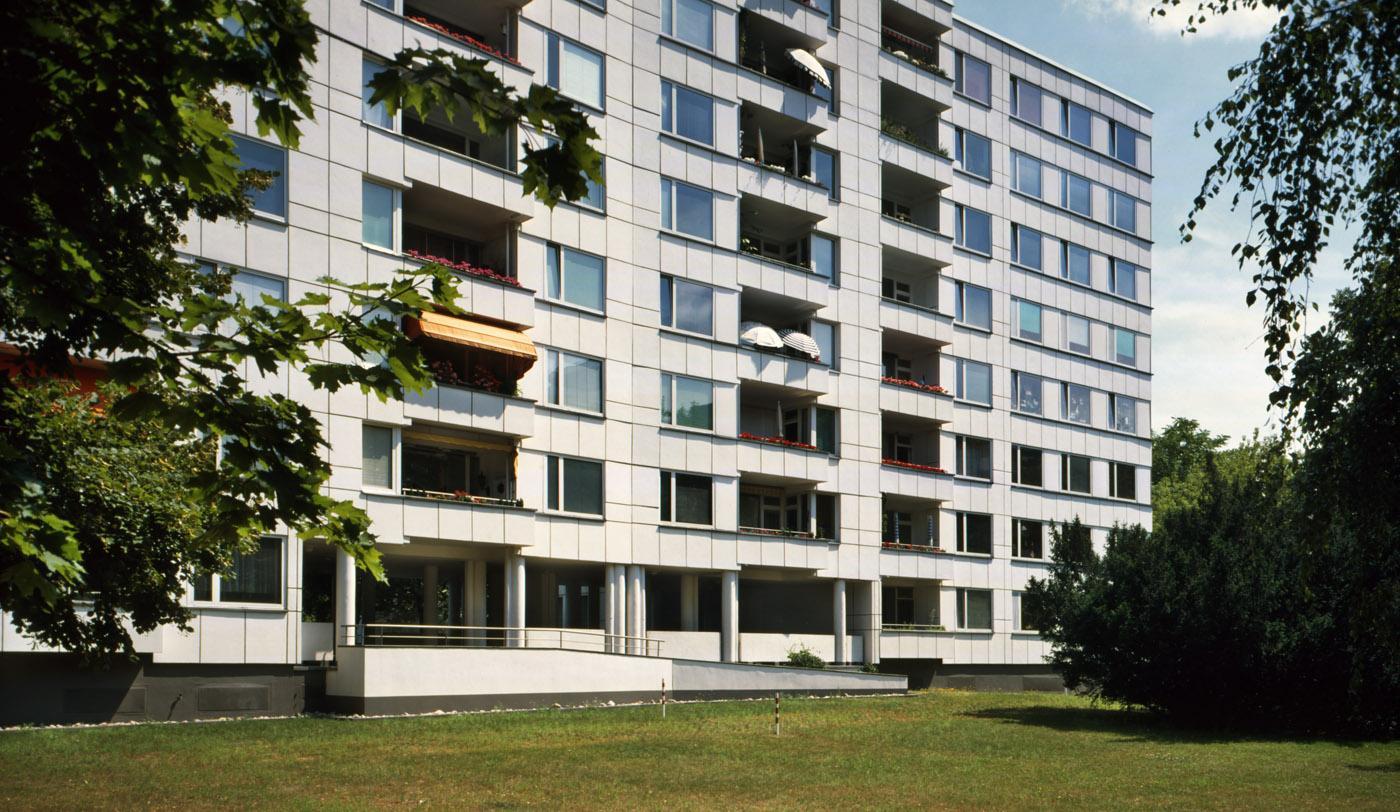Hansaviertel Apartment building “Haus 16”
Discover this destination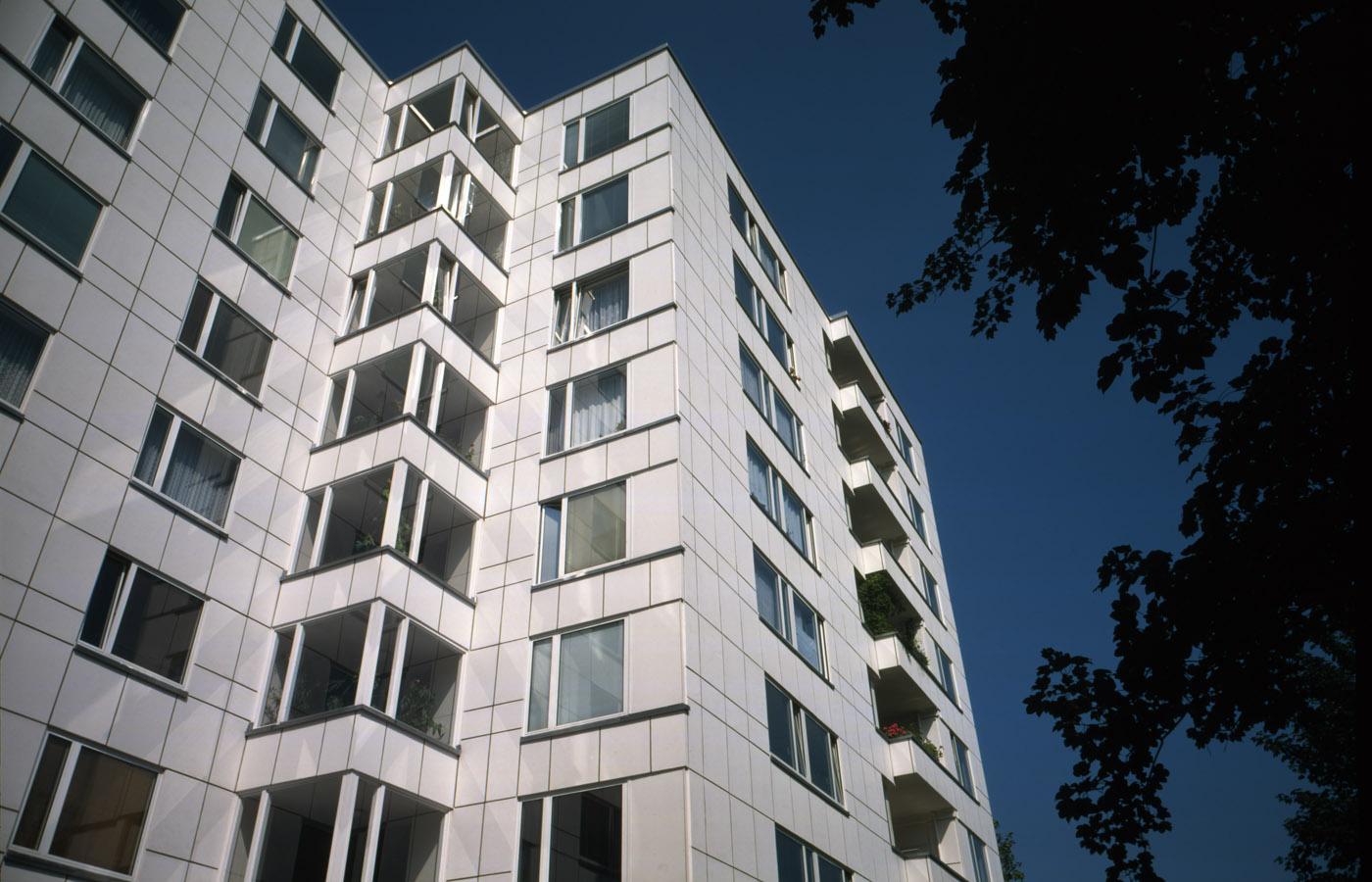
The Hansaviertel residential area in West Berlin was built for the 1957 Interbau Building Exhibition. After the devastation of World War II, the area was rebuilt following principles of international Architectural Modernism. 53 architects from 14 different countries were invited to the project, Alvar Aalto being one of them. In Aalto’s office, design work for the apartment building began in 1954. Aalto made plans for several potential sites around the exhibition area until it was decided to build the “Haus 16” project right in the heart of Hansaviertel, near Hansaplatz Underground Station.
The design of the building was innovative. The building tilts slightly to the west and opens more to the east, allowing natural light to reach all of the apartments. Viewed from the west, the building looks straightforward, but from the east it appears as if it were two separate house buildings. In the middle between the two main bodies, the column-supported, open and covered outdoor atrium connects the opposite sides of the building. This space connects to two separate staircases and elevators, reaching the several floors of the building. This covered outdoor space also gives access to the common courtyard.
The lower floor of the building has 4 apartments on each side and the upper floors each feature 5 apartments. There are 8 floors in the building, which means that there are 78 apartments in total. The largest apartments are 83-90m² in area, and the smallest ones 35m². The building features more larger apartments than smaller ones. The largest apartments were designed according to a familiar courtyard structure, with different spaces grouped around a general purpose room, usually used as a living room, placed in the center. Balconies were also provided to all apartments, to create open-air liveable space for the residents. During the 1957 Interbau exhibition, one of the apartments in the building was open for visits, furnished with Artek furniture.
The Hansaviertel area consists mainly of high-rise apartment buildings and of some smaller residential buildings. Placement of buildings was designed in order to maximise natural daylight exposure and good park views for the apartments. Most of the buildings in the area are of concrete construction and feature predominantly white and gray color.
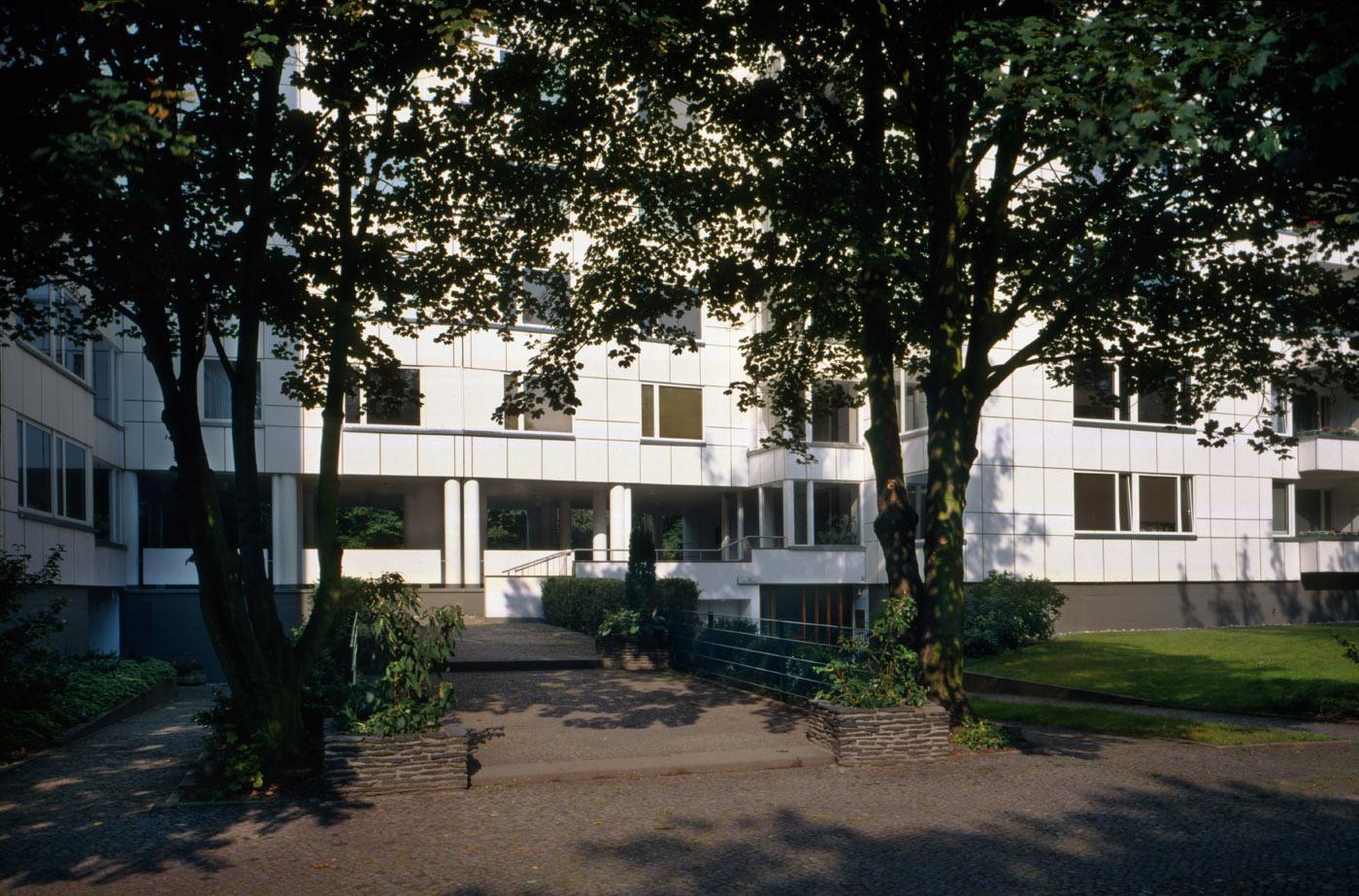
Hansaviertel Apartment building “Haus 16”
Address
Klopstockstraße 32, 10557 Berliini, Saksa
